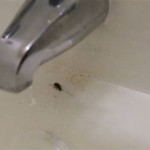How to Add an Exhaust Fan to a Bathroom
Exhaust fans are an essential part of any bathroom. They help to remove moisture and odors from the air, which can help to prevent mold and mildew growth. If your bathroom does not have an exhaust fan, it is important to install one as soon as possible.
Installing an exhaust fan is not a difficult project, but it does require some basic electrical knowledge. If you are not comfortable working with electricity, it is best to hire a qualified electrician to do the job for you.
Here are the steps on how to add an exhaust fan to a bathroom:
1. Choose an exhaust fan
The first step is to choose an exhaust fan. There are many different types of exhaust fans available on the market, so it is important to do your research before making a purchase. Consider the following factors when choosing an exhaust fan:
- CFM rating: The CFM rating of an exhaust fan measures how much air it can move per minute. The higher the CFM rating, the more powerful the fan.
- Size: Exhaust fans come in a variety of sizes. Choose a fan that is the right size for your bathroom.
- Noise level: Some exhaust fans are louder than others. Choose a fan that is quiet enough for your needs.
- Features: Some exhaust fans come with additional features, such as a built-in light or a humidity sensor.
2. Install the exhaust fan
Once you have chosen an exhaust fan, it is time to install it. Here are the steps on how to install an exhaust fan:
- Turn off the power to the bathroom.
- Remove the old exhaust fan (if there is one).
- Cut a hole in the ceiling for the new exhaust fan. The hole should be the same size as the exhaust fan housing.
- Insert the exhaust fan housing into the hole.
- Wire the exhaust fan to the electrical supply.
- Turn on the power to the bathroom.
- Test the exhaust fan to make sure it is working properly.
3. Vent the exhaust fan
Once the exhaust fan is installed, it is important to vent it properly. The exhaust fan should be vented to the outside of the house through a duct. The duct should be made of a fire-resistant material, such as metal or PVC.
Here are the steps on how to vent an exhaust fan:
- Cut a hole in the wall for the exhaust duct. The hole should be the same size as the duct.
- Insert the duct into the hole.
- Seal the duct to the wall with caulk.
- Run the duct to the outside of the house.
- Install a vent cap on the end of the duct.
4. Maintain the exhaust fan
Once the exhaust fan is installed and vented, it is important to maintain it properly. Here are some tips on how to maintain an exhaust fan:
- Clean the exhaust fan regularly. The exhaust fan should be cleaned at least once a month. To clean the exhaust fan, remove the cover and wipe down the blades with a damp cloth.
- Lubricate the exhaust fan motor. The exhaust fan motor should be lubricated every six months. To lubricate the motor, remove the cover and apply a few drops of oil to the motor bearings.
- Replace the exhaust fan filter (if applicable). Some exhaust fans have a filter that needs to be replaced every few months. To replace the filter, remove the cover and replace the old filter with a new one.
By following these tips, you can keep your exhaust fan running smoothly for years to come.

Install A New Bathroom Vent Fan Light The San Fernando Valley Sun

How To Replace And Install A Bathroom Exhaust Fan From Start Finish For Beginners Easy Diy

How To Install A Bathroom Exhaust Fan Broan 688

How To Replace And Install A Bathroom Exhaust Fan From Start Finish For Beginners Easy Diy

Blog

How To Bathroom Exhaust Fan Installation Unboxing

How To Install A Bathroom Exhaust Fan

How To Install A Bathroom Exhaust Fan

Bathroom Exhaust Fan With Humidity Sensor On One Switch Home Improvement Stack Exchange

How To Install A Bathroom Exhaust Fan







